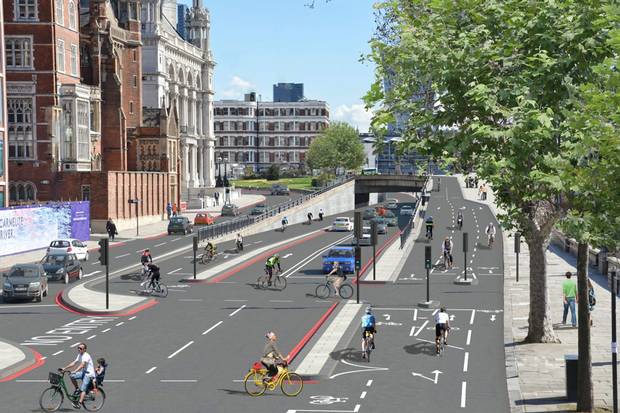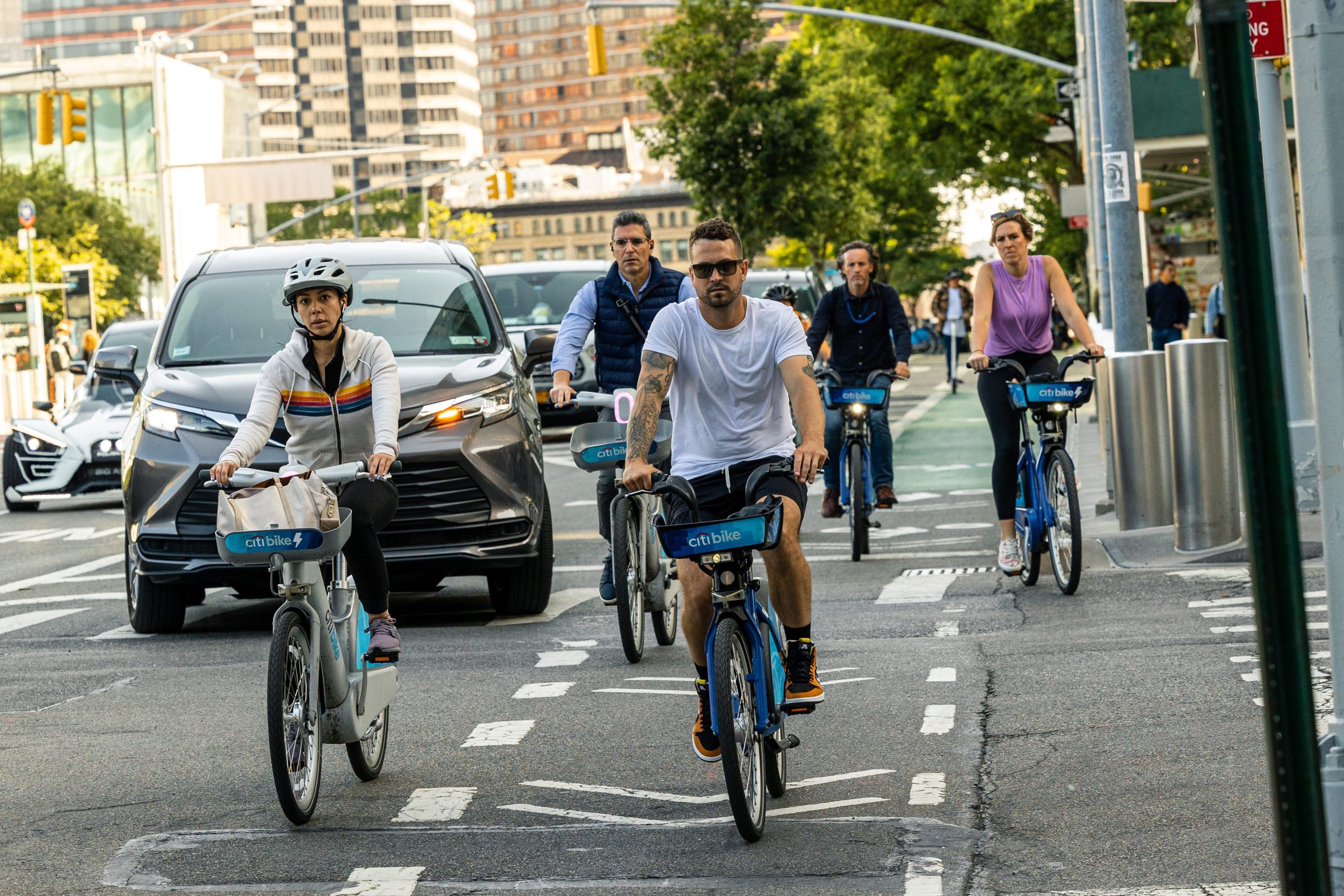
London is surging ahead with big plans for protected bikeways that span the city. By comparison, New York's bike plans, while moving forward incrementally, feel piecemeal. Has safe cycling infrastructure become an afterthought in the city's Vision Zero program?
The question came up yesterday during a seminar on cycling policy hosted simultaneously in the two cities, organized by New London Architecture with the Forum and Institute for Urban Design.
"Our goal is to get more people cycling, more safely, more often," said Sarah Burr, senior strategy and planning manager for surface transport at Transport for London. "We know we're not going to reach the targets we have for cycling by getting existing cyclists to cycle more."
She highlighted three initiatives in London key to improving safety and broadening the appeal of bicycling for everyday trips: "cycle superhighways" made of protected paths on major streets, "quietways" akin to bike boulevards, and "Mini-Hollands," which are transforming three of London's 32 boroughs into models for cycle-friendly design. To make those plans a reality, London mayor Boris Johnson has committed to tripling spending on bicycle infrastructure, to almost £1 billion over a decade.
Burr's counterpart in New York, DOT Assistant Commissioner for Street Improvement Projects Josh Benson, gave an overview of Vision Zero, covering lower speed limits, increased enforcement, the Right of Way Law, and street redesigns. He walked through three projects, one of which included bicycle facilities.
"The impetus behind Vision Zero is looking at how we can make the most progress towards zero, and I think it’s pedestrians. Pedestrians are, unfortunately, the majority of people killed and injured in traffic," Benson said after the event. "I think in the early stages of Vision Zero, that has to be the focus. You have to look at where the problem is most severe."
Noting that fatality rates per mile are higher for biking than for walking, Transportation Alternatives Executive Director Paul Steely White argued that bike infrastructure shouldn't be compartmentalized. "It’s incumbent on us here in New York to make bike lanes much more baked-in to Vision Zero than it is now," he said, "because for risk exposure, it’s much more dangerous to ride a bike."
"It means cycling facilities are taken out of the realm of being a debatable amenity, and more a required safety improvement, like crosswalks and traffic signal improvements, that are not subject to community board veto or debate," he said after the event. White called the protected bike lanes planned for Queens Boulevard "a beacon of hope" but said the city needs to set more ambitious goals. (The de Blasio administration recently backed down from its commitment to increase bicycle mode share to 6 percent, instead aiming to double cycling by 2020.)
"Why are we only building five miles of protected lanes a year when we know that they are such effective lifesavers?" White asked. "London’s spending a billion pounds on their new cycling program.”
Benson pointed to DOT's current crop of protected bike lane projects, including Fort George Hill and filling the First Avenue gap, as evidence that bike safety has a place in Vision Zero. What's changed, he suggested, is that bike lanes aren't getting as much public attention as they used to.
"These projects are more welcomed by the community than maybe they had been in the last few years, and therefore they’re a little, maybe, more under the radar," he said. "That’s not a bad thing. I think people are embracing the change of having more bike infrastructure and not complaining about it as much, and therefore it’s just a little quieter."
Londoners at the forum were intrigued by New York's shift away from cycling as a focal point for transportation policy.
"I think the interesting start point in New York, which is around pedestrian deaths, as opposed to cycling deaths, is an interesting start point," said Steve Whyman, CEO of Broadgate Estates, a major central London office complex. "It’s about all road users and it’s about all people in the city."
"What I found interesting about a lot of the initiatives in New York is that they are wider than just, say, what needs to be done for cyclists," said Christian Wolmar, a journalist and advocate who is seeking the Labour nomination in next year's mayoral elections. "What you’re looking at is a wider vision and I think that’s something we can learn from."





